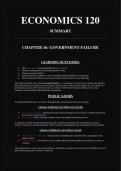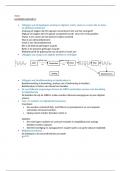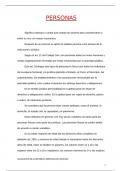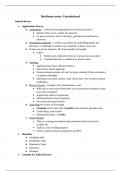SUMMARY
CHAPTER 16: GOVERNMENT FAILURE
LEARNING OUTCOMES:
• How public goods are distinguished from private goods.
• About revealing preferences through majority voting
• About government failures
• About externalities (spillovers costs and benefits) and the method to remedy them'
• How information failures can justify government interventions in some markets
This chapter examines government and market failures - a circumstance in which private markets do not bring
about the allocation of resources that best satisfies society's wants. When private markets fail, the role for the
government may arise. We examine the role as it relates to three kinds of failures: public goods, voting
outcomes, and externalities and information asymmetries.
PUBLIC GOODS
To understand public goods, we need to distinguish their characteristics from private goods.
CHARACTERISTICS OF PRIVATE GOODS
• Rivalry (in consumption): Buying one product and consuming it will not make it available for the next
person to buy and consume it.
• Excludability: Sellers can keep a product away from people who do not pay for it.
A competitive market not only makes private goods available to consumers but also efficiently allocates
society's resources to a particular product. There is neither underproduction nor overproduction of the product.
CHARACTERISTICS OF PUBLIC GOOD
• Non-Rivalry (in consumption): One person's consumption does not prevent the consumption of the
good by others.
• Non-Excludability: No effective way to exclude others from the benefit of the good once it comes to
existence.
These characteristics create a free-rider problem- individuals or groups who use the non-excludability service or
good without paying for it directly or indirectly.
, With only free riders, the demand for a public good does not get expressed in the market. With no market
demand, firms have no potential to 'tap the demand' for revenues and profits.
OPTIMAL QUANTITY OF A PUBLIC GOOD
The government must try and estimate the demand for goods through surveys and public votes.
DEMAND FOR PUBLIC GOODS
Basically, demand is the collective willingness of the public to purchase a public good.
COMPARING MARGINAL BENEFIT AND MARGINAL COST
• The supply curve for any good, private or public, is its marginal cost curve.
• The demand curve for any good, private or public, is its marginal benefit curve.
The marginal cost rises as more of a good is produced - because of the law of diminishing marginal returns.
In the short run, the government has fixed resources (public capital) with which to 'produce' public goods.
As more units of a variable resource (labour) increase relative to these fixed resources, the total product
eventually rises at a diminishing rate - marginal benefit declines and marginal costs rise. This is why the supply
curve slopes upward.
The optimal quantity of the public good is identified at the intersection between the demand curve and the
supply curve or when marginal benefit is equal to marginal cost.
OPTIMAL QUANITYT OF PPUBLIC GOODS = DEMAND = SUPPLY
= MARGINAL DEMAND = MARGINAL SUPPLY
Therefore, equating marginal benefit and marginal cost efficiently allocates society's scarce resources.
REVEALING PREFERENCES THROUGH MAJORITY VOTES.
Questions like "What public goods should government produce and in what amounts?", "To what extent should
the government intervene to correct externalities?", "How should the tax burden of financing government be
appropriated?" are answered through a democratic process that relies heavily on majority voting. Even though it
does a reasonably good job, it is imperfect.
INEFFICIENT VOTING OUTCOMES
Society's wellbeing is enhanced when the government provides a public good whose total benefit exceeds its
total cost.
IMPLICATIONS
So, an inefficient outcome may occur as either overproduction or underproduction of a specific public good, and
therefore as an over-allocation or under-allocation of resources for that particular resource.
Private goods allow people to find a product regardless of whether the majority prefer it or not. The opposite is
also true. However, with public goods it is not easy to do so as public goods are made available based on
majority vote.











